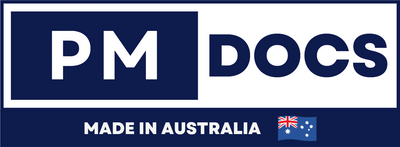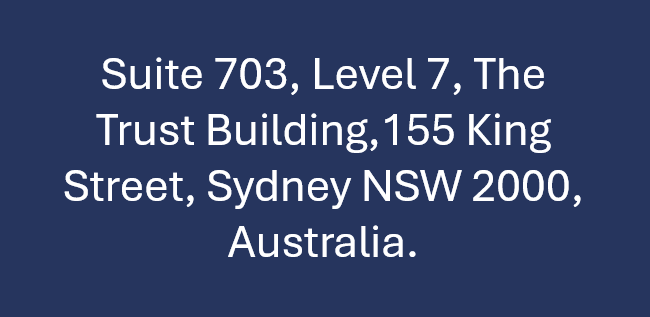ISO Standards in Australia: How They Differ from Global ISO Standards
ISO Standards In Australia: Adapting Global Benchmarks For Local Needs
In an increasingly globalised world, International Organization for Standardization (ISO) standards serve as a universal language for quality, safety, and efficiency. They provide a common framework, fostering trust and interoperability across borders. However, when these global benchmarks land on Australian shores, they often undergo a nuanced transformation, adapting to the unique legal, environmental, and cultural landscape of the continent.

Understanding these differences is crucial for any business operating in Australia, or for international entities looking to enter the Australian market. It's not simply about "complying with ISO"; it's about understanding the "Australian way" of implementing and sometimes modifying these global standards.
What Are ISO Standards, And Why Do They Matter Globally?
At its core, ISO is an independent, non-governmental international organization that develops standards to ensure the quality, safety, and efficiency of products, services, and systems. With 169 national standards bodies as members, ISO has published over 24,000 international standards covering almost every industry imaginable.
The benefits of adopting ISO standards are widely recognised:
-
Enhanced Quality and Efficiency: Streamlined processes and best practices.
-
Increased Customer Satisfaction: Consistent delivery of reliable products and services.
-
Improved Risk Management: Proactive identification and mitigation of potential issues.
-
Global Market Access: Demonstrated compliance often eases trade and market entry.
-
Regulatory Compliance: Many regulations are based on or reference ISO standards.
- Sustainability and Environmental Performance: Standards like ISO 14001 guide eco-friendly practices.
However, a "global standard" doesn't always mean a "one-size-fits-all" solution. This is where Australia's approach comes into play.
The Australian Context: Standards Australia And The National Imperative
In Australia, the official body responsible for developing, adopting, and publishing standards is Standards Australia (SA). Standards Australia represents Australia's interests in international standardisation forums, including ISO and the International Electrotechnical Commission (IEC).
Standards Australia plays a pivotal role in bridging the gap between global ISO standards and local Australian requirements. Their mandate involves:
-
Representing Australian Interests: Ensuring Australia's voice is heard in the development of international standards.
-
Adopting International Standards: Incorporating relevant ISO and IEC standards into the Australian framework.
-
Developing National Standards: Creating new standards where international ones do not exist or are insufficient for Australia's unique needs.
- Maintaining and Reviewing Standards: Ensuring standards remain current and effective.
The result is a comprehensive suite of Australian Standards (AS) and joint Australian/New Zealand Standards (AS/NZS) that may sometimes directly mirror an ISO standard, sometimes modify it, and sometimes stand entirely independently.
How ISO Standards Differ In Australia: Three Key Approaches
The primary way ISO standards "differ" in Australia isn't always through outright contradiction, but through the method of their integration into the national standards framework. There are typically three main approaches:
-
Direct Adoption (AS ISO XXXXX):
-
Description: Many ISO standards are directly adopted as Australian Standards without any technical changes. They retain the ISO designation, often simply prefixed with "AS" (e.g., AS ISO 9001:2016 for Quality Management Systems).
-
Nuance: While the technical content remains identical, the context of application in Australia might be influenced by local legal and regulatory requirements. For instance, an AS ISO standard might be referenced by Australian legislation, giving it specific legal weight within the country.
-
Description: Many ISO standards are directly adopted as Australian Standards without any technical changes. They retain the ISO designation, often simply prefixed with "AS" (e.g., AS ISO 9001:2016 for Quality Management Systems).
-
Modified Adoption (AS/NZS ISO XXXXX or AS ISO XXXXX with National Annexes):
-
Description: In cases where an ISO standard doesn't perfectly align with Australian (and often New Zealand) conditions, it may be adopted with specific national modifications. These modifications can range from minor editorial changes to significant technical alterations or additions.
-
Nuance: These changes are often detailed in a national foreword, annexes, or appendices. A common example is an ISO standard adopted as an AS/NZS ISO standard, indicating joint agreement between Australia and New Zealand, potentially with modifications relevant to both countries' contexts. This ensures the standard is globally informed but locally applicable.
-
Description: In cases where an ISO standard doesn't perfectly align with Australian (and often New Zealand) conditions, it may be adopted with specific national modifications. These modifications can range from minor editorial changes to significant technical alterations or additions.
-
National Development (AS XXXXX or AS/NZS XXXXX):
-
Description: Where no suitable ISO standard exists, or an existing one is deemed entirely inadequate for Australian conditions, Standards Australia will develop a purely national standard (AS) or a joint Australian/New Zealand standard (AS/NZS). These standards might be influenced by global best practices but are tailor-made for specific local requirements.
- Nuance: This approach often applies to highly specific industries, unique environmental challenges, or areas where Australian regulatory frameworks demand a bespoke solution (e.g., specific building codes, electrical safety standards, or agricultural practices).
-
Description: Where no suitable ISO standard exists, or an existing one is deemed entirely inadequate for Australian conditions, Standards Australia will develop a purely national standard (AS) or a joint Australian/New Zealand standard (AS/NZS). These standards might be influenced by global best practices but are tailor-made for specific local requirements.
Why Do These Differences Exist? The Drivers Behind Australian Adaptations
The reasons for these adaptations are multifaceted and reflect Australia's unique position as a developed, geographically isolated nation with distinct characteristics:
-
Legal and Regulatory Frameworks: Australia has its own robust set of laws, acts, and regulations (e.g., Work Health and Safety laws, environmental protection acts, building codes). Standards must align with, and often support, these legislative requirements, necessitating modifications or entirely new national standards.
-
Unique Environmental Conditions: Australia's climate (extreme heat, bushfires, floods), unique geography, and biodiversity demand specific considerations in areas like construction, water management, agricultural practices, and environmental management.
-
Industry-Specific Needs: Key Australian industries like mining, agriculture, and construction often have unique operational challenges and safety requirements that may not be fully addressed by generic international standards.
-
Health and Safety Considerations: Australia generally maintains very high standards for health and safety. National standards often reflect more stringent requirements or specific methodologies deemed necessary for the local workforce and public.
-
Historical Context and Existing Infrastructure: Decades of national standard development mean that existing infrastructure, practices, and established industries may require gradual transitions or specific adaptations when adopting new international standards.
- Consumer Expectations and Cultural Factors: Local market preferences, consumer protection laws, and societal values can also play a role in shaping how standards are interpreted and applied.
Navigating The Landscape: Key Differences And Australian Adaptations
To illustrate these points, let's look at some areas where Australian standards demonstrate clear adaptations or unique developments:
| Global ISO Standard (Example) | Australian Standard Equivalent/Approach | Key Difference/Reason for Adaptation |
|---|---|---|
| ISO 9001 (Quality Mgt) | AS ISO 9001:2016 | Direct Adoption: Minimal technical difference. However, context of application in Australia is heavily influenced by local legal requirements for quality (e.g., consumer law, industry-specific regulations). |
| ISO 14001 (Env Mgt) | AS ISO 14001:2016 | Direct Adoption: Core requirements are identical. Implementation in Australia is driven by specific environmental legislation (e.g., EPBC Act, state-level EPA regulations) which may dictate more stringent monitoring or reporting. |
| ISO 45001 (OHS Mgt) | AS/NZS ISO 45001:2018 | Modified Adoption: Replaced the popular AS/NZS 4801. While largely identical, the joint AS/NZS prefix reflects nuances for both countries. Application is heavily influenced by Australia's robust Work Health & Safety (WHS) laws, which often prescribe specific duties and frameworks beyond the general ISO guidance. |
| Building Codes/Construction | National Construction Code (NCC) / AS XXXX series | National Development/Modified Adoption: While ISOs exist for various construction elements (e.g., structural design), Australia's NCC (incorporating BCA and PCA) and extensive AS standards (e.g., AS/NZS 1170 for structural design actions, AS 3700 for masonry) are highly prescriptive, reflecting specific climate, material availability, and safety requirements not fully covered by generic ISOs. |
| Electrical Safety | AS/NZS 3000 (Wiring Rules) / AS XXXX series | National Development/Modified Adoption: While IEC (ISO's sister organisation) has electrical standards, Australia's AS/NZS 3000 "Wiring Rules" are highly detailed and mandatory for electrical installations, developed to suit local infrastructure, safety protocols, and supply conditions. These are far more specific than general international guidelines. |
| Food Safety (ISO 22000) | AS ISO 22000:2018 (Direct) + Food Standards Code (FSANZ) | Direct Adoption + National Regulation: ISO 22000 is adopted directly. However, it operates in conjunction with the legally binding Food Standards Australia New Zealand (FSANZ) Food Standards Code, which provides specific, prescriptive requirements for food composition, labelling, and safety that go beyond the management system focus of ISO 22000. |
Different Types Of Australian Standards And Their Relationship With ISO
To further clarify, here’s a breakdown of common Australian standard prefixes:
| Standard Prefix | Description | Relationship to ISO | Example |
|---|---|---|---|
| AS ISO | Australian Standard, directly adopting an ISO standard. | Identical to the ISO standard. | AS ISO 9001:2016 (Quality management systems) |
| AS/NZS ISO | Joint Australian/New Zealand Standard, directly adopting an ISO standard. | Identical to the ISO standard for both countries. | AS/NZS ISO 45001:2018 (Occupational health and safety management systems) |
| AS/NZS | Joint Australian/New Zealand Standard. | Developed jointly by Australia and New Zealand, often influenced by ISO/IEC but not a direct adoption. May have national variations. | AS/NZS 3000:2018 (Electrical installations – Wiring Rules) |
| AS | Purely Australian Standard. | Developed by Standards Australia for specific Australian needs, where no suitable ISO exists or significant modification is required. | AS 1428.1:2009 (Design for access and mobility – General requirements for access – New building work) |
Implications For Businesses
For businesses operating in Australia, or those looking to, understanding these nuances is critical:
-
Due Diligence is Key: Always check the specific AS or AS/NZS designation of any standard you intend to comply with. Do not assume an ISO certification is automatically compliant with all Australian requirements without specific verification.
-
Consult Local Experts: Engage with Australian consultants, auditors, or legal advisors who understand the interplay between international standards, Australian standards, and local legislation.
-
Stay Updated: Standards are regularly reviewed and updated. Keep abreast of changes, especially those that might incorporate new ISO revisions or introduce national modifications.
- Focus on the "Why": Understand not just what the standard says, but why specific adaptations have been made in Australia. This often sheds light on critical local safety, environmental, or regulatory priorities.
Benefits And Challenges Of Australia's Approach
Benefits:
-
Local Relevance: Standards are better tailored to Australia's unique climate, geography, culture, and legal environment, leading to more practical and effective implementation.
-
Enhanced Safety and Quality: Modifications often address specific local risks or raise the bar for safety and quality beyond international minimums.
-
Clearer Compliance Pathways: By integrating with Australian law, standards provide clearer guidance for businesses on meeting their legal obligations.
- Stronger Industry Specificity: Allows for highly detailed standards in key Australian industries like mining or construction.
Challenges:
-
Complexity: The layered approach can be complex to navigate, especially for international businesses unfamiliar with Australia's regulatory landscape.
-
Potential for Discrepancy: In some niche areas, significant divergence could potentially create barriers to trade or market access if products/services compliant with pure ISO are not compliant with the specific AS/NZS.
-
Resource Intensity: Developing and maintaining national adaptations requires significant local expertise and resources from Standards Australia.
- Keeping Pace: Ensuring that national standards remain harmonised with evolving international ISO standards requires constant vigilance.
Conclusion
Australia's relationship with ISO standards is a pragmatic and dynamic one. It reflects a commitment to global best practices while firmly asserting the necessity of national adaptation. By adopting, modifying, and sometimes independently developing standards, Australia ensures that quality, safety, and efficiency benchmarks are not just internationally recognised but also rigorously relevant and effective within its own distinct context. For any entity interacting with the Australian market, appreciating this "Australian nuance" of standards compliance is not just beneficial – it's absolutely essential.




